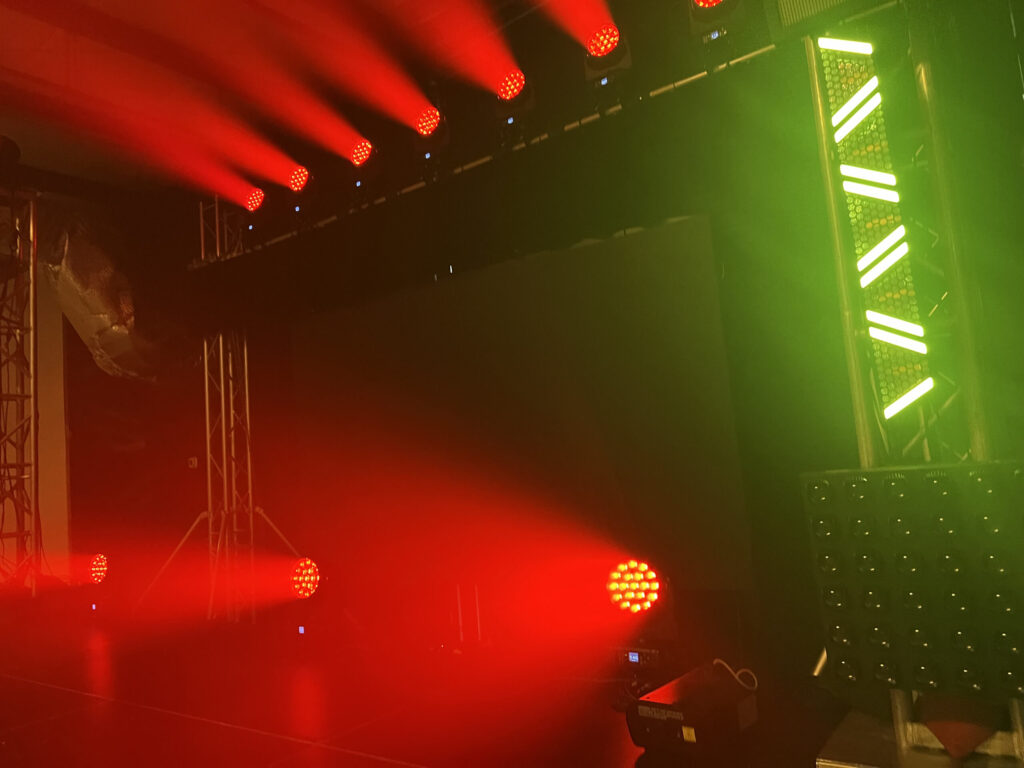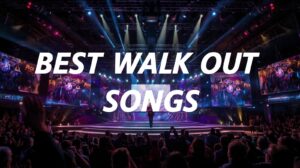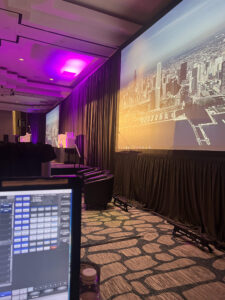Stage lighting is about creating atmosphere in your event, supporting your brand, and elevating the event experience. Whether you are planning a corporate conference, wedding reception, or live concert, the right event lighting solutions can turn your ordinary space into an extraordinary space that holds your audience’s attention throughout the event.
In this blog, we’ll break down how to choose the best stage lighting for any event and why you should hire a professional Audio Visual company in Atlanta for the best stage lighting solution for your event.
Why Is Stage Lighting So Important for Your Event?
Here’s why stage lighting is important for your event:
- Creates Atmosphere: Warm lighting creates intimacy, bright lighting creates excitement.
- Captivates Attention: Lights point the audience’s eyes to the important moments or speakers.
- Brings Out Performances: For a keynote or band, lighting enhances performers’ presence and energy.
- Supports Branding: Your styles and colors can match your theme or brand.
- Improves Visibility: From product details to facial expressions, if it’s well-lit, then they are visible and appreciated.
Professionally designed stage lighting doesn’t just add to your event, it becomes part of it.
What are the Factors to Consider When Choosing the Stage Lighting?
Some of the key factors to consider when choosing the stage lighting are:
Event Type and Purpose
Are you hosting a seminar, gala, trade show, or concert event? Each event requires a different look. A corporate function can be well served with crisp, clean white light, while a music festival requires dynamic effects like strobes and washes of color
Concerts and live performances require more dynamic and immersive lighting setups to hold large, energetic audiences. If you’re producing a live music event and need lighting that makes an impact, don’t miss the guide to concert lighting essentials, which breaks down everything from beam movement to crowd engagement lighting techniques.
Ceiling Height and Venue Location
Your venue location will heavily influence lighting possibilities. High ceilings provide more sophisticated rigging and effects, with smaller venues needing smaller, low-heat configurations. Always tour the site before finalizing your plan.
Stage Size and Audience Size
More people require brighter lights to see from a distance. A bigger stage also calls for multiple lighting zones to avoid casting shadows and the illusion of an out-of-balance performance.
Color Scheme and Branding
Think about what lighting will add to your event theme or branding. Include business colors in LED lights or use branded gobos that reinforce your message in a positive but subtle way.
Budget and Timeline
Be realistic regarding what can be achieved within the budget. Light the high-impact areas first, such as the main stage or key installations, and work outwards. The sooner you can plan, the greater room there will be for creativity and technical setup.
Pro Tips for Effective Stage Lighting
Understand Your Space
Before you start designing your lighting, you have to know the size of the space, the layout, the ceiling height, and the existing lighting. A high ceiling space requires a different lighting design than a small theatre or outdoor space. By knowing these details, you can design lighting that enhances the atmosphere without overwhelming the space.
Layer Your Lighting
Professional lighting is more than just turning a few spotlights on in your space. It’s key lighting to illuminate speakers, fill lighting to soften harsh shadows, and backlighting to add depth and dimension to create visual effects. These techniques will create a beautiful environment and make every corner of your event look great on camera.
Use Dynamic Lighting
Coordinate an intelligent lighting system that can change colors, move, and adjust intensity during your event. This adds to the drama and keeps your audience engaged throughout the event. Sync lighting changes with event cues like entrances, music transitions, or speaker segments for a seamless experience.
Choose the Right Color Palette
Color plays a big role in setting the mood. Warm tones create intimacy while bold colors energize the crowd. Stick to the brand or theme colors when possible.
Highlight Key Elements
Make sure the stage, podium, or product displays are well lit. Strategic spotlighting draws attention where you want it and makes sure photos and videos look great.
Benefits of Hiring Professional Lighting Production Services
Hiring professional event lighting solution production services offers long-term value and peace of mind.
Expertise in Lighting Design
Professionals have years of experience in designing lighting and know how to work with different spaces. They know and create effects that match your event goals and avoid common mistakes like overexposure or poor color balance throughout the event.
Access to High-Quality Production Equipment
Professionals use state-of-the-art equipment like LED panels, moving heads, uplights, and control boards to deliver stunning results. This equipment ensures flawless execution throughout the event.
Professionals use state-of-the-art equipment like LED panels, moving heads, uplights, and control boards to deliver amazing results. This equipment ensures a flawless execution throughout the event.
On-Site Technical Support Staff
Professionals are dedicated to their work and manage the lighting system live and handle all setups, operations and troubleshooting so you can have a smooth transition throughout your event.
Customization and Creativity
Professionals will tailor their setup to your vision and offer more ideas you might not have thought of for your event.
Time and Stress Savings
Leave everything from logistics to setups to the experts and focus on other aspects of your event planning.
Conclusion
Choosing the right stage lighting involves a strategic approach that considers your venue, audience, and event goals. That’s where expert support makes the difference.
Huview Productions is an Audio Visual Production Company in Atlanta that specializes in designing cohesive lighting setups that align with the technical and creative demands of live events. From intimate presentations to large-scale productions, our team ensures every lighting choice enhances the overall impact.
If you need help in planning your event lighting setup, feel free to contact HuView Production to speak with our event lighting experts and bring your vision to life.







